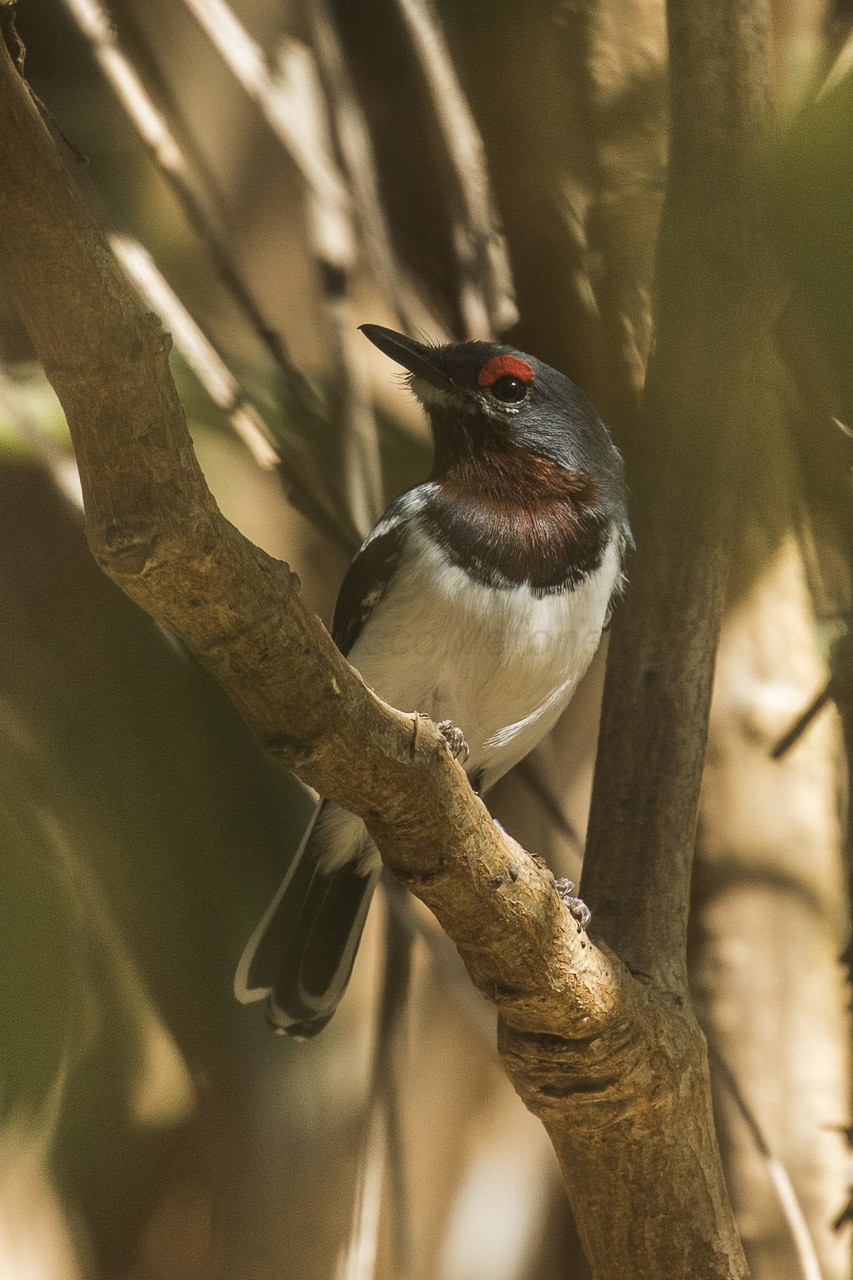Brown-throated Wattle-eye
A species of Forest and Woodland Wattle-eyes Scientific name : Platysteira cyanea Genus : Forest and Woodland Wattle-eyes
Brown-throated Wattle-eye, A species of Forest and Woodland Wattle-eyes
Botanical name: Platysteira cyanea
Genus: Forest and Woodland Wattle-eyes
Content
Description General Info
 Photo By Francesco Veronesi , used under CC-BY-SA-2.0 /Cropped and compressed from original
Photo By Francesco Veronesi , used under CC-BY-SA-2.0 /Cropped and compressed from original Description
The brown-throated wattle-eye (Platysteira cyanea), also known as the common wattle-eye or scarlet-spectacled wattle-eye, is a small, insectivorous passerine bird. The wattle-eyes were previously classed as a subfamily of the Old World flycatcher family Muscicapidae, but are now usually separated from that group. This species breeds in west, central and northeast tropical Africa. This common species is found in secondary forest and other woodland areas, including gardens. The eggs are laid in a small neat lichen and cobweb cup low in a tree or bush. The adult brown-throated wattle-eye is a stout bird about 14 cm (5.5 in) long. The breeding male has glossy black upperparts, and white underparts with a neat black breast band. There is a strong white wingbar, and fleshy red wattles above the eye. The females are grey-black above, and also have the white wing bar and red wattles. There is a small patch of white below the bill, and the throat and breast are maroon, separated from the white belly by the black breast band. Young males are washed-out, greyer versions of the female. These active insect-eating birds are found in pairs or small groups. The ringing call of the brown-throated wattle-eye is a very characteristic six note doo-dd-dum-di-do-do. 
Size
13 cm
Nest Placement
Tree
Feeding Habits
Brown-throated Wattle-eye primarily consumes various insects up to 40 mm including lepidopterans, hymenopterans, termites, and beetles, as well as spiders, scorpions, and snails. Actively forages throughout the day across all vegetation levels with a mix of gleaning, hopping, sallying, and aerial hawking.
Habitat
Brown-throated Wattle-eye thrives in a variety of wooded habitats, favoring areas such as forest clearings, edges, and secondary growth. It is typically found in environments that are not primary forests, but rather places with vegetation typical of the Sahel region, including mangroves and areas surrounding human settlements such as village peripheries and gardens. Brown-throated Wattle-eye has a marked preference for secondary growth forests and altered landscapes rather than undisturbed forest interiors.
Dite type
Insectivorous
General Info
Feeding Habits
Bird food type
Species Status
Not globally threatened.
Scientific Classification
Phylum
Chordates Class
Birds Order
Perching birds Family
Wattle-eyes and batises Species
Brown-throated Wattle-eye